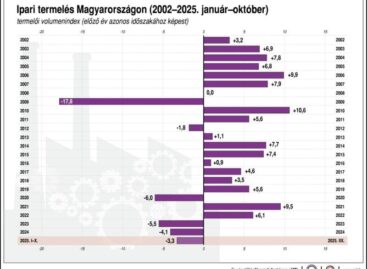The solvency of the population may slowly return to the pre-war level
In the last quarter of last year, the solvency of Hungarian households rose again, although the decline of recent years has not yet been reversed, according to the new solvency report of Intrum and GKI. Domestic GDP is expected to increase, and the forint will show further strengthening against the euro. At the same time, in the year 2024, due to the global environment, we also have to reckon with additional challenges.
Budapest, January 24, 2024. In the last quarter of 2023, following the annual trend, the solvency of the Hungarian population continued to increase according to the research of Intrum and GKI. The Intrum Solvency Index (IFI) was 6.51 in the first quarter, 11.06 in the second, and 12.99 on average in the third. In the fourth quarter, the index reached 18.5 points, making it 40 percent higher than in 2022. Although the 2023 results show a significant improvement, the last time the solvency of households was similarly low was around 2015, in the period before the Russian-Ukrainian war.
Related news
Large companies expect easing inflationary pressures and decreasing public burdens
🎧 Hallgasd a cikket: Lejátszás Szünet Folytatás Leállítás Nyelv: Auto…
Read more >The GKI business climate index closed 2025 at a one and a half year high
🎧 Hallgasd a cikket: Lejátszás Szünet Folytatás Leállítás Nyelv: Auto…
Read more >KSH: industrial production decreased by 2.7 percent in October compared to the same period of the previous year, and increased by 0.5 percent compared to the previous month
🎧 Hallgasd a cikket: Lejátszás Szünet Folytatás Leállítás Nyelv: Auto…
Read more >Related news
The New Year’s Eve fireworks fair is back: temporary sales will start in department store parking lots at the end of December
🎧 Hallgasd a cikket: Lejátszás Szünet Folytatás Leállítás Nyelv: Auto…
Read more >The first Eastern European non-alcoholic beer turns 50
🎧 Hallgasd a cikket: Lejátszás Szünet Folytatás Leállítás Nyelv: Auto…
Read more >Sausage: pork prices are already going down, but they won’t be cheaper in stores – a significant correction may come in the spring at the earliest
🎧 Hallgasd a cikket: Lejátszás Szünet Folytatás Leállítás Nyelv: Auto…
Read more >






